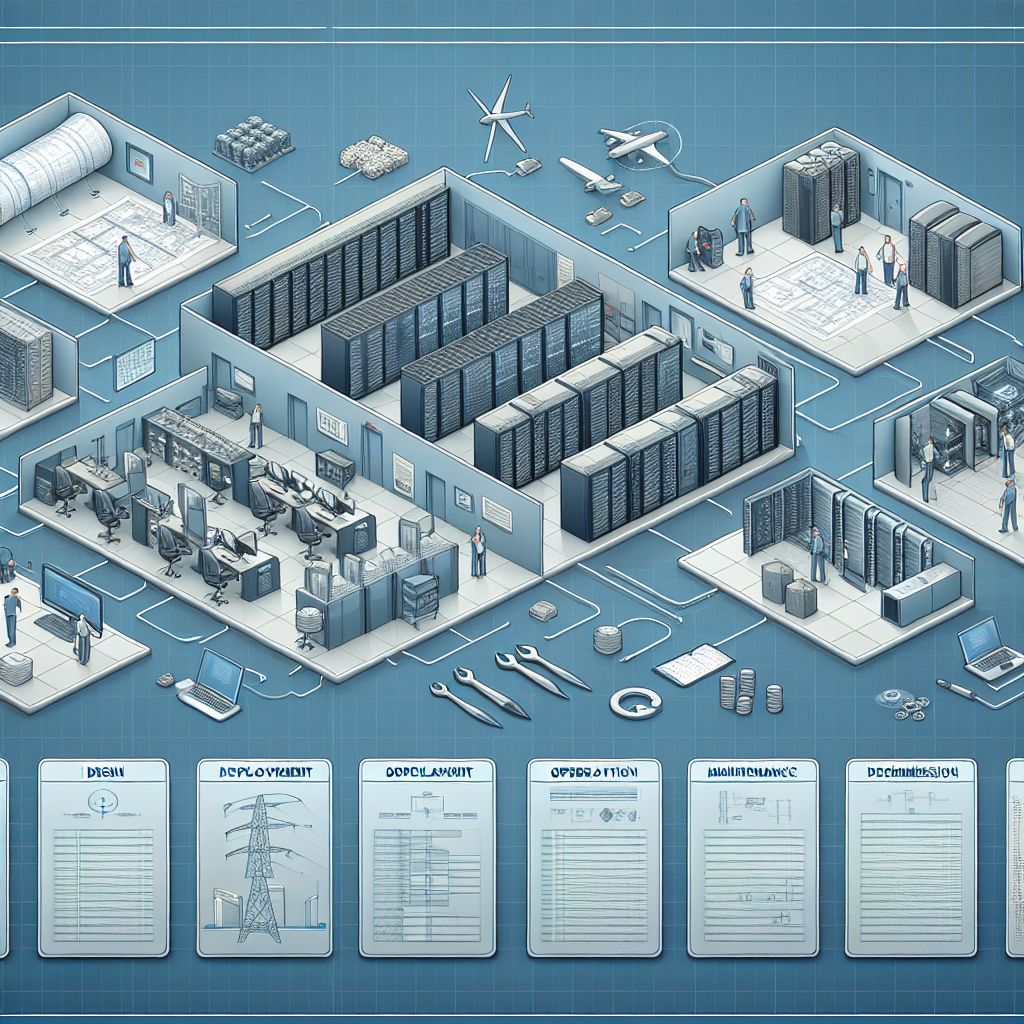Data centers are crucial for modern businesses, as they house the servers and networking equipment that enable organizations to store, process, and distribute data efficiently. However, managing a data center throughout its lifecycle can be a complex and challenging task. From planning and design to decommissioning and disposal, every stage of a data center’s lifecycle requires careful attention and strategic decision-making.
Planning and Design
The first step in data center lifecycle management is planning and design. This phase involves determining the requirements for the data center, such as its capacity, power and cooling needs, security measures, and connectivity options. It also involves selecting the location for the data center, considering factors such as proximity to users, accessibility, and environmental considerations.
During the design phase, data center managers must work with architects, engineers, and other stakeholders to develop a detailed plan for the data center layout, including the placement of servers, networking equipment, and other infrastructure components. This phase also involves selecting the right technology solutions, such as power distribution units, cooling systems, and security measures, to ensure the data center meets the organization’s needs and requirements.
Construction and Commissioning
Once the planning and design phase is complete, the next step in data center lifecycle management is construction and commissioning. This phase involves building the data center according to the design plan and installing the necessary infrastructure components, such as servers, networking equipment, and cooling systems. It also involves testing and commissioning the data center to ensure that it is functioning properly and meeting the organization’s requirements.
During the construction and commissioning phase, data center managers must work closely with contractors, vendors, and other stakeholders to ensure that the data center is built according to specifications and timelines. They must also develop a comprehensive testing and commissioning plan to verify that the data center is ready for operation.
Operation and Maintenance
Once the data center is up and running, the next phase in data center lifecycle management is operation and maintenance. This phase involves monitoring and managing the data center on a day-to-day basis to ensure that it is functioning properly and meeting the organization’s needs. It also involves performing routine maintenance tasks, such as updating software, replacing hardware components, and optimizing performance.
During the operation and maintenance phase, data center managers must develop a comprehensive maintenance plan to ensure that the data center remains reliable and efficient. They must also monitor key performance indicators, such as power usage, cooling efficiency, and server uptime, to identify potential issues and address them before they impact business operations.
Decommissioning and Disposal
The final phase in data center lifecycle management is decommissioning and disposal. This phase involves shutting down the data center and disposing of any equipment and infrastructure components that are no longer needed. It also involves ensuring that sensitive data is securely erased and that any environmental regulations are followed.
During the decommissioning and disposal phase, data center managers must develop a detailed plan for decommissioning the data center, including timelines, procedures, and responsibilities. They must also work with vendors and contractors to dispose of equipment and infrastructure components in an environmentally responsible manner.
In conclusion, data center lifecycle management is a complex and challenging task that requires careful planning, strategic decision-making, and ongoing maintenance. By following a comprehensive approach to data center lifecycle management, organizations can ensure that their data centers are reliable, efficient, and secure throughout their lifecycle.


Leave a Reply